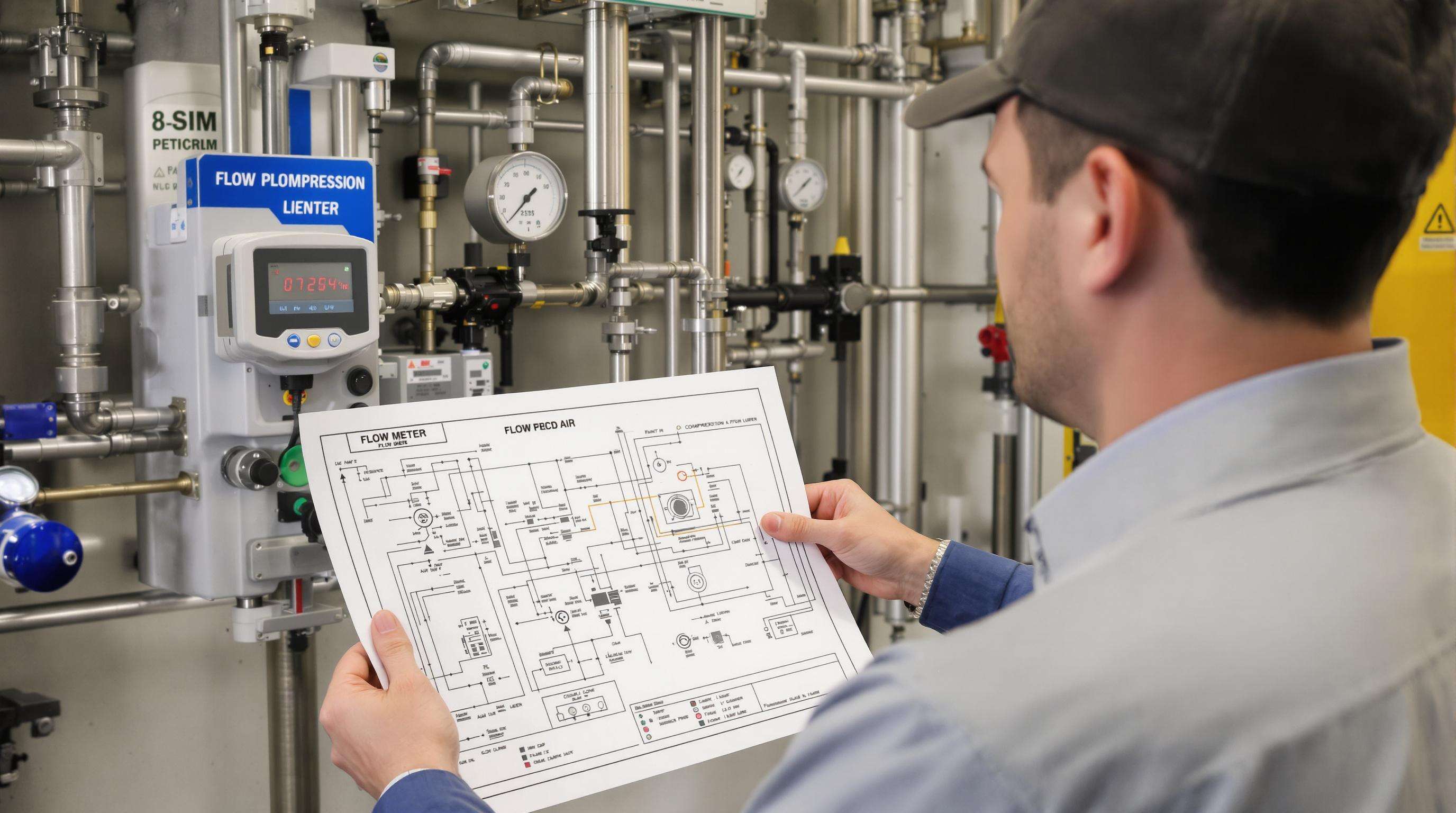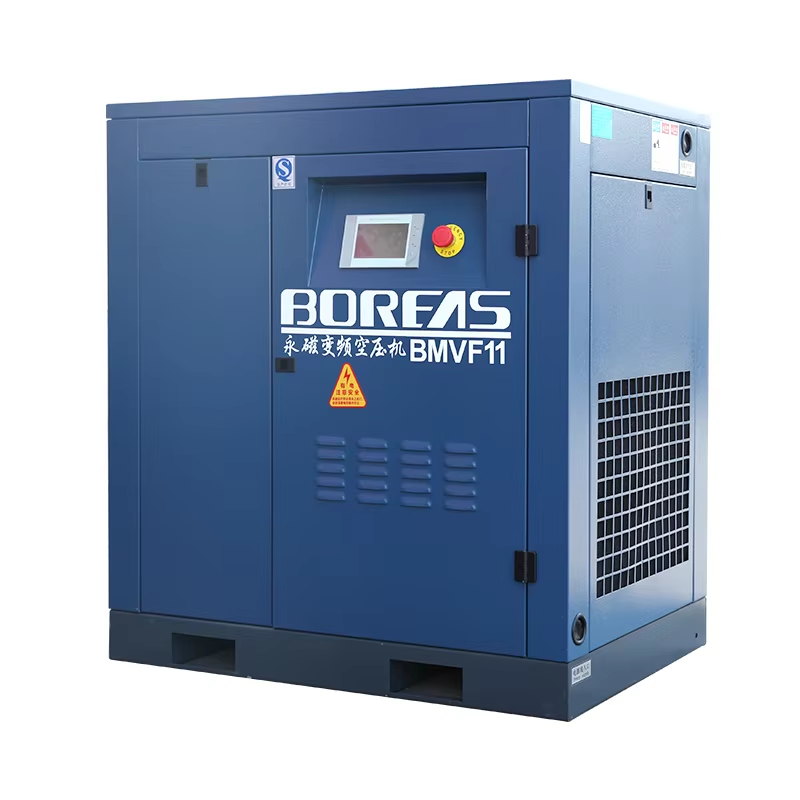Determining Your Industrial Screw Air Compressor's Air Demand
Calculate total air demand by cataloging all air-powered equipment and their CFM ratings, then apply a simultaneous usage factor (typically 60-80% of total connected load). Seasonal peaks like pneumatic heating or production surges must be accounted for—modern data loggers help verify actual usage patterns against theoretical calculations.
Calculating Required CFM Flow Rates

Use this formula:
Total CFM = (Sum of all tools' CFM) × Simultaneous usage factor
Example:
- 10 tools at 10 CFM each = 100 CFM theoretical
- 70% usage factor = 70 CFM required
Add a 25-30% safety margin for pressure drops and minor expansions. Note that oversizing by 15% increases energy waste by $7,200 annually per 100 CFM (DOE 2023).
Future-Proofing Through Projected Growth Analysis
Plan for 3-5 year growth by:
- Building a 20% capacity buffer for moderate expansions
- Choosing modular systems for large-scale growth
Undersized compressors cost manufacturers $740k yearly in unplanned downtime (Ponemon 2023). Align compressor service life (10-15 years) with facility expansion timelines.
Understanding PSI Specifications
Match PSI to actual tool requirements—most manufacturing needs range from 90-175 PSI:
- Textiles: ~100 PSI
- Automotive paint: 150+ PSI
Oversizing by just 2 PSI increases energy costs by 25% (DOE 2012). Engineers typically specify 14.5-29 PSI above tool needs to offset system losses.
Accounting for System Pressure Drops
Key pressure loss sources:
- Piping: 5-7 PSI per 200 ft of 1-inch pipe
- Refrigerant dryers: 3-5 PSI
- Filters: 2-3 PSI
Professional system audits can identify these issues, with corrected systems showing 18% efficiency gains.
Contamination Risks in Sensitive Applications
- Oil-injected: 0.01 ppm residual oil after filtration
- Oil-free: 0.00 ppm (ISO Class 0) via dry screw designs
Oil-free is mandatory for pharmaceuticals, food processing, and medical device production.
Operational Cost Comparison

| Parameter | Oil-Injected | Oil-Free |
|---|---|---|
| Upfront Cost | 30-40% lower | Higher initial cost |
| Annual Oil Cost | $1,200–$2,800 (40 hp) | None |
| Filter Replacement | 3–6 months | Annual |
| 10-Year Service Cost | $18k–$32k | $7k–$12k |
Oil-free models offer 8-12% better energy efficiency and eliminate oil disposal fees.
Industry Adoption Trends
Pharmaceutical manufacturers are switching to oil-free at 14.7% annual growth, driven by FDA 21 CFR Part 11 mandates. New aseptic lines show 92% fewer air quality issues after conversion.
VSD Technology for Variable Air Demand
Variable-speed drives (VSD) adjust motor RPM to match real-time needs:
- Reduces energy use by 20-40% vs fixed-speed
- Ideal for shift-based or seasonal operations
Case Study: Automotive Plant Savings
After switching to VSD:
- 43% less energy ($112k saved annually)
- 72% reduced downtime
- 15 dB quieter operation
ROI Calculation
| Cost Factor | Fixed-Speed | VSD |
|---|---|---|
| Initial Cost | $58,000 | $82,000 |
| 5-Year Energy Cost | $192,500 | $115,500 |
| 5-Year Total | $262,500 | $193,500 |
Typical VSD payback: 18-28 months.
kW/CFM Benchmarking
Top models achieve <4 kW/100 CFM via improved rotor designs. Modern units use 15% less energy than decade-old equipment.
Cost vs Savings Analysis
Premium efficiency models:
- Cost 25-40% more upfront
- Deliver 60% of savings via energy conservation
- Payback in <3 years for 24/7 operations
Thermal Energy Recovery
Heat exchangers capture 70-80% of waste heat:
- Reduces boiler fuel use by 40%
- Pays back in two heating seasons
- Meets ISO 50001 standards
Application-Specific Solutions
Food Processing Requirements
Oil-free compressors with ISO 8573-1 Class 0 certification prevent contamination in:
- Pneumatic conveying
- Packaging lines
- Bottling operations
High-Duty Cycle Manufacturing
For 24/7 operations (95% duty cycle):
- VSD models maintain 100-150 PSI
- High-temp cooling prevents shutdowns
- Remote monitoring predicts maintenance needs
FAQ
What is the formula for calculating total CFM?
The formula is: Total CFM = (Sum of all tools' CFM) × Simultaneous usage factor.
Why is it important to account for system pressure drops?
Accounting for system pressure drops is crucial because they can lead to inefficiencies and increased energy costs. Understanding these allows for better system audits and efficiency gains.
What are the advantages of oil-free compressors?
Oil-free compressors are ideal for applications where contamination must be avoided, such as pharmaceuticals and food processing. They provide better energy efficiency and eliminate oil disposal costs.
How does VSD technology benefit industrial compressors?
Variable-speed drives technology benefits industrial compressors by adjusting motor RPM to match real-time demand, reducing energy use and costs, and being ideal for shift-based or seasonal operations.
Table of Contents
- Determining Your Industrial Screw Air Compressor's Air Demand
- Calculating Required CFM Flow Rates
- Future-Proofing Through Projected Growth Analysis
- Understanding PSI Specifications
- Accounting for System Pressure Drops
- Contamination Risks in Sensitive Applications
- Operational Cost Comparison
- Industry Adoption Trends
- VSD Technology for Variable Air Demand
- Case Study: Automotive Plant Savings
- ROI Calculation
- kW/CFM Benchmarking
- Cost vs Savings Analysis
- Thermal Energy Recovery
- Application-Specific Solutions
- Food Processing Requirements
- High-Duty Cycle Manufacturing
- FAQ

